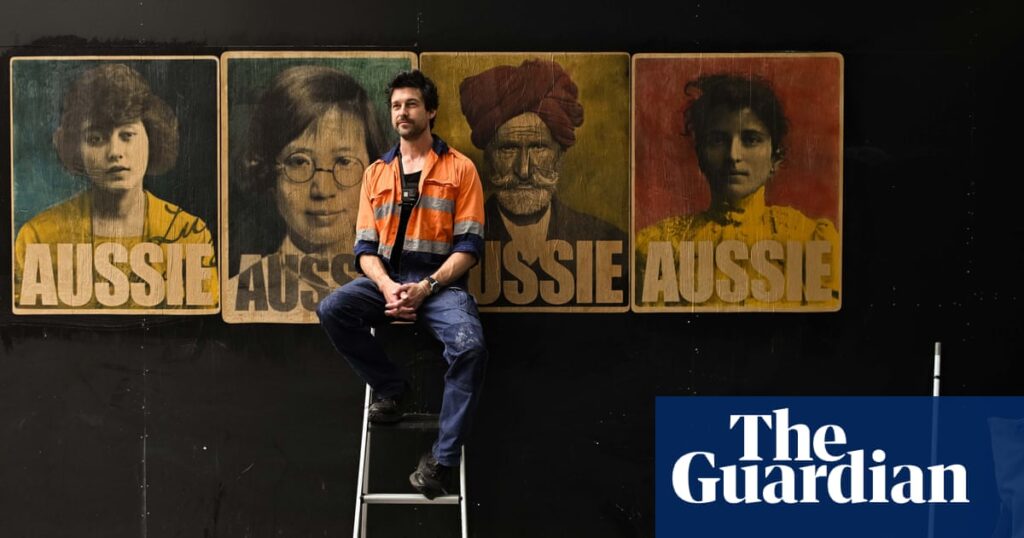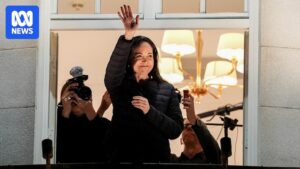
Peter Drew swiftly transforms a blank city wall into a thought-provoking piece of art, questioning the essence of Australian identity. The Adelaide artist’s efficient movements are unsurprising; he has already adorned city walls across the country with as many as 5,000 of his iconic “Aussie” posters, and he is far from finished.
As Drew applies starchy glue to secure the colorized archival images on a Sunday afternoon, passersby occasionally pause, intrigued by his work. Among them, a man donning a One Nation T-shirt approaches with a friendly demeanor, seeking directions to a nearby anti-immigration protest.
The Origins of the ‘Aussie’ Posters
The latest protest, characterized by jingoism and fear of “mass migration,” saw protesters tearing down Drew’s posters as he attempted to put them up. This act of resistance only fueled his determination to expand the project, leading to the creation of 1,000 new posters and six fresh designs, including one depicting individuals tearing down his work.
The ‘Aussie Posters’ initiative began nearly a decade ago, inspired by a surge in anti-Islamic sentiment in Australia following the Lindt Cafe siege. Drew embarked on a quest to find images of people who applied for exemptions to the White Australia policy.
“I was already into archival images before then,” Drew explains. “I looked at the photographs here in Adelaide first and found some great shots. But it wasn’t until I was at the Melbourne archive, the national archive, and I found the image of Monga Khan. And as soon as I saw that, I thought, well, this is it. This is the centrepiece, and he was unknown.”
Historical Context and Artistic Impact
The image of Monga Khan, captured in 1916, features his striking profile, moustache, and turban. As a hawker, a vital economic role, Khan applied for an exemption to return to India and then come back to Australia. Drew’s screen-printed designs on craft paper aim to provoke thought about national identity.
Drew’s work has elicited both outrage and appreciation. Those challenged by his art express vitriol, while new arrivals and those who find hope in his evocative images offer gratitude. Despite the controversy, Drew remains committed to his mission, especially as immigration policy debates continue to serve as a proxy for nationalism and racism.
Art and Activism Collide
As the anti-immigration protest in Adelaide commenced on Sunday morning, Drew cleverly covered one of his posters with an identical one, affixed with masking tape, and set up a bucket of water as a prank. An anti-immigration protester, believing the coast was clear, tore down the top poster, inadvertently spilling water and revealing the original beneath.
“Pick it up,” a police officer instructed. The officer and his colleagues watched as the protester dutifully disposed of every scrap. “Good boy,” one of them remarked.
The Broader Implications
Drew’s artistic endeavors highlight the ongoing tension between national identity and immigration. His work serves as a reminder of Australia’s complex history with migration and the ongoing debates that shape its future. By confronting these issues head-on, Drew invites Australians to reflect on who they are and who they want to be.
As the conversation around immigration and national identity continues, Drew’s ‘Aussie’ posters remain a poignant symbol of resistance and reflection. His work challenges Australians to consider the diverse narratives that contribute to their collective identity, urging them to embrace a more inclusive vision of what it means to be Australian.





